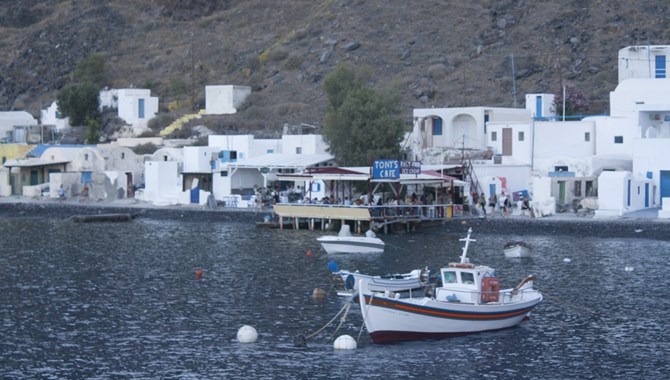
Less than one mile separates the small island Thirassia from Santorini, but they couldn't be further apart: there is no trace here of the cosmopolitan air so vivid in the larger island. Authentic and unpretentious, Thirassia offers the perfect antidote to Santorini's crowds, maintaining much of the same charm. Thirassia is actually a part of Santorini or rather of the greater round island that used to be called Stroggyli and pre-existed in an undivided form. After the tremendous earthquake that shook the Aegean, following the pre-historic eruption of the volcanic crater underneath Stroggyli, the island 'broke' into pieces. Its central part was left submerged underwater, while the rest remained above the sea to create Santorini, Thirassia and Aspronisi, the three islands that form the imaginary rim of the – still active – volcano.
The island's history follows hand in hand, and in many cases, takes a lead over Santorini's. During the 13th century, the Latin conqueror Sanoudos first landed in Thirassia, before settling on the main island. And a small chuch built on the hill above Thirassia's port, dedicated to Agia Irini (Santa Irini) is said to have been the inspiration for the naming of Santorini – although there is a similar legend said for another St. Irini church located on the main island.
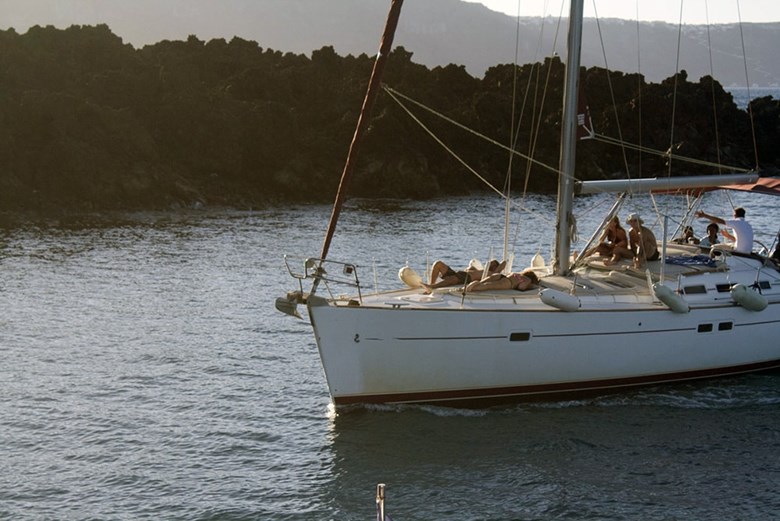
In mid 18th century, Thirassia acquired a strange connection with the other end of the world. There used to be a mine here, owned by the family of Nikolaos Alafouzos, which produced the rather rare mineral called pozzolana. This was exported all the way to Suez to be used for the construction of the famous channel. Miners working on site found remnants of an ancient building, ceramic fragments and even a human skeleton. These discoveries led to a group of archaeologists coming over to examine them and further excavate the area, producing more findings and paving the way to the excavation of Akrotiri, which lead to some of the greatest archaeological discoveries of all time. Made by the same materials, Thirassia and Santorini share common geological characteristics, as well as architectural lines, traditions and customs. The soil here is colored in black, brown and red hues as well and is equally fertile as that of Santorini's. The vegetation is low, the waters saphire blue and the houses hewn in the volcanic rock and glimmering white in the Mediterranean sun. But here is where the similarities with Santorini stop, as Thirassia is not a worldwide cosmopolitan hotspot, but a place to calm down and enjoy in tranquility.
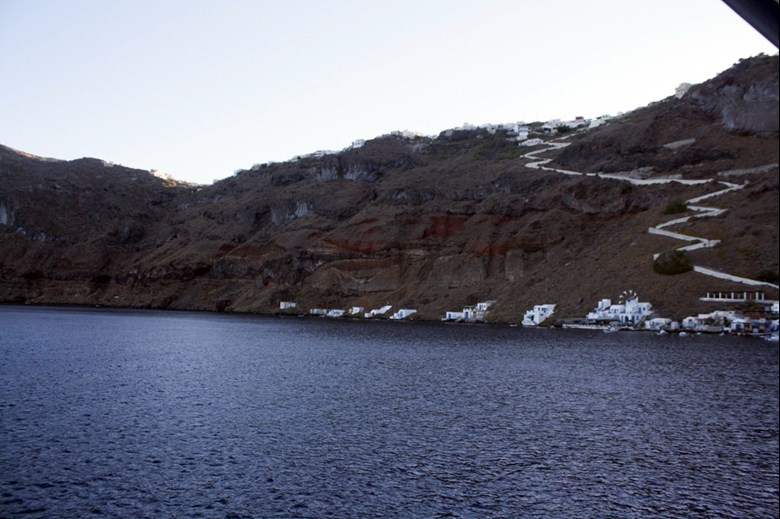
Reaching the miniature port of Riva, the gaze soon drifts upwards to the hill and the settlement surrounding the small church of Agia Irini, with its taverns and black beach welcoming the visitor and setting the pace to a lower gear. The community bus or improvised taxis made out of farmers' trucks are available here for a ride to the mainland.
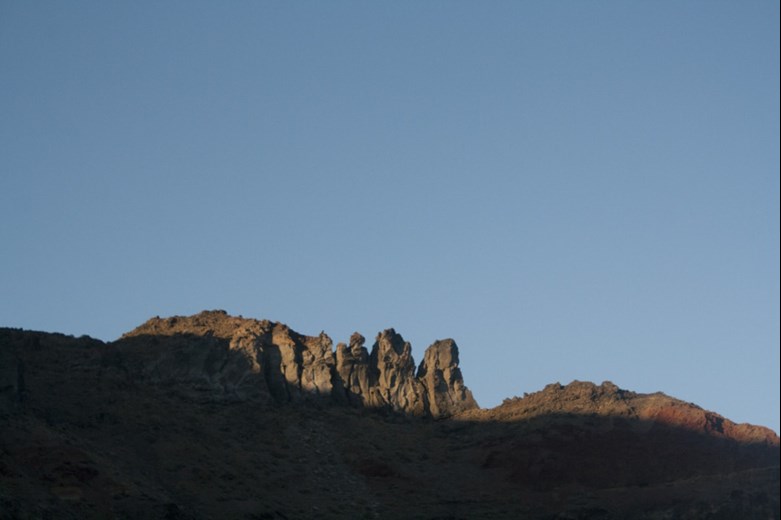
Thirassia is also a place for trekking lovers, eager to discover its beauty cutting corners' following the "rimidia" (pathways carved out for agricultural purposes). Potamos settlement consists of a bunch of beautiful rock-hewn houses with colourful gardens and a couple of churches. Agrilia is the largest and oldest settlement on Thirassia, but also the hardest to find, since it is built in such a way as to be hidden from outsiders. So, you need to find a local to show you the way through the valley or you will never get to see Agrilia's houses, wineries and the outstanding church of Panagia Eisodion built in 1887.
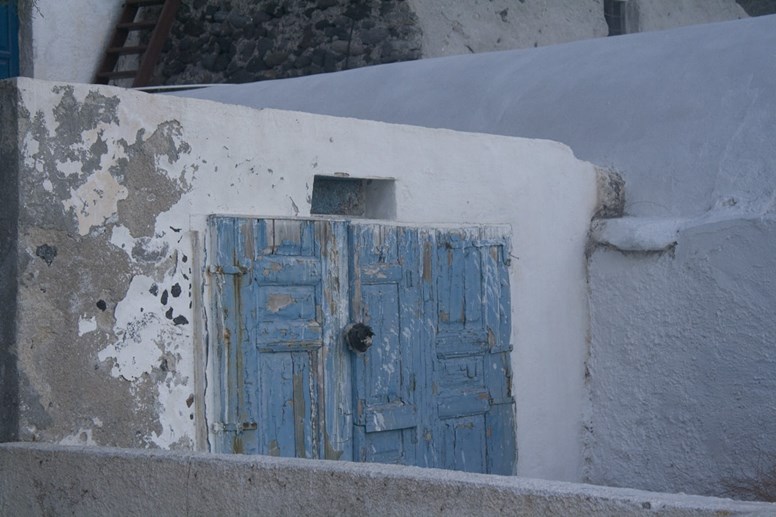
On the west side, Manolas, the island's capital offers the most impressive – and unexpected – view to Santorini, acting as a natural mirror to the Caldera from the opposite side. The sweet smell of freshly baked bread from the local bakery will guide you through the picturesque "kalderimia";.
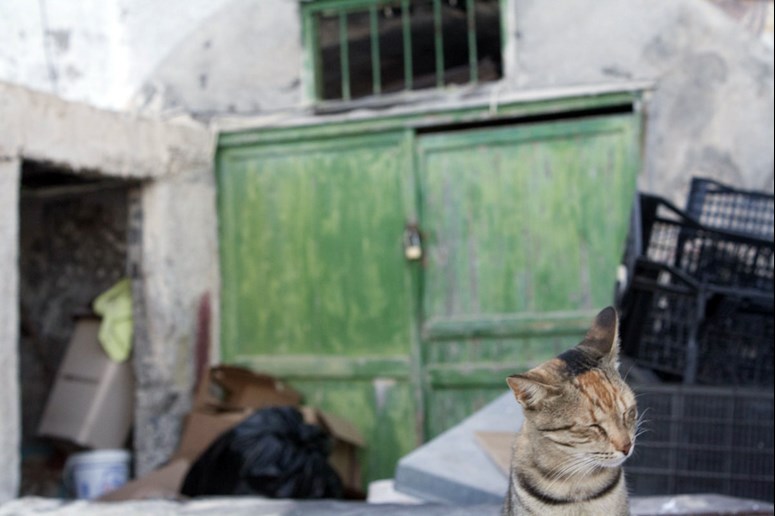
You shouldn't fail to visit kyr-Manolis' grocery store, filled with traditional goodies, as well as the church of St. Constantine (1874). South-east from Manolas, the settlement of Korfos, used to be inhabited up until 30 or 40 years ago, but is now abandoned. Still, it offers a magnificent view to the Mikri and Megali Kammeni. Finally, Korfos, the old port, accessible on the back of a mule or by 270 steps (!), is a nice fishermen’s cove. Sailing and fishing boats find harbour here and there is a couple of fish taverns to choose from.
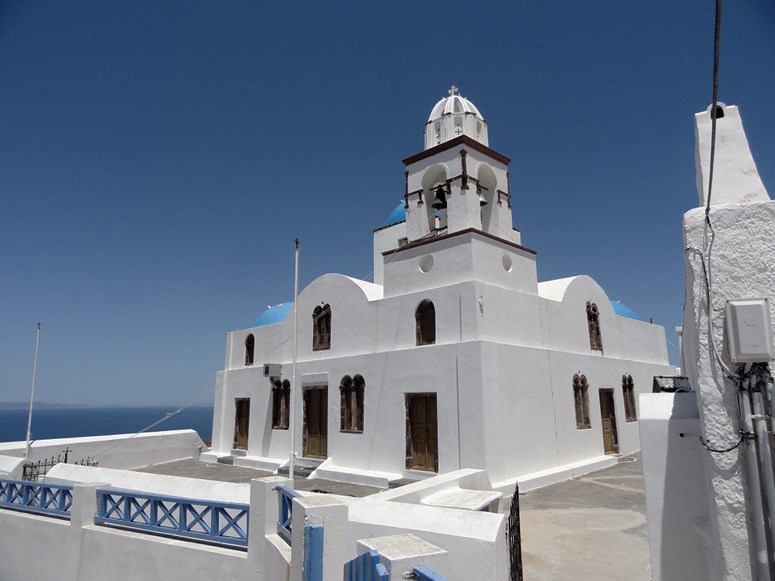
There are 21 churches in Thirassia, each one dedicated to another Saint, usually built by the families of sailors to keep them safe while at sea. Whenever each of the churches celebrates its patron Saint (the dates scattered all year round), Thirassia's residents from all the settlements gather to honour the celebrations. Thirassia's inhabitants are mostly fishermen, farmers and wine makers. So, before leaving, you can take a part of Thirassia with you by stocking up in "chloro tyri" (the local fresh, creamy and slightly sour cheese), fava, wild capers, round zucchini and "ksylagouro" (an "alternative" cucumber). The wine production is equally impressive as in Santorini, with the whites Asyrtiko, Athiri and Aidani, the reds Mandilara and Mavrotragano and the sun- dried Vin Santo leading the way to uplifted spirits.
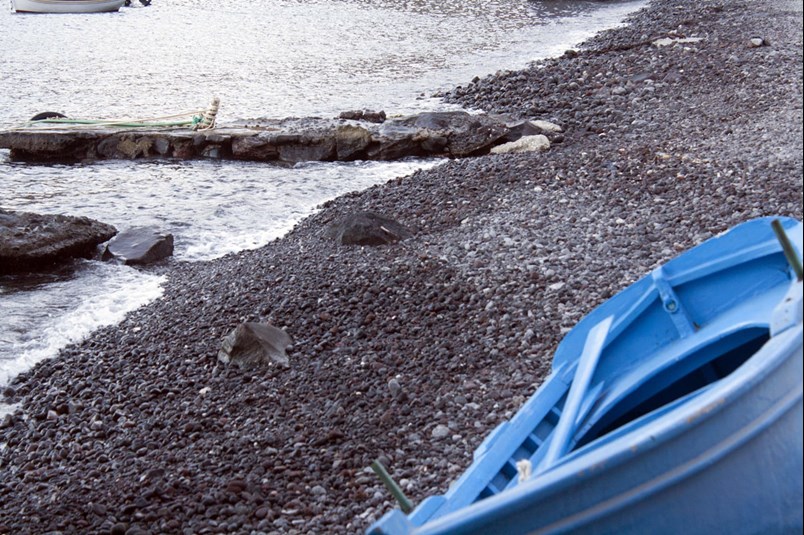
If you are one to taste before you buy, a visit in one of Thirassia's taverns will surely leave you wanting more. Kantouni (+30 22860 29227) in Korfos has been serving traditional tastes since 1970, with Thirassia tavern (+30 22860 29001), Captain John (+30 22860 29042) and Tonia (+30 22860 29026) sharing in the glory nearby. Panorama (+30 22860 29186) is also a nice choice in Manolas and in Agistri (+30 22860 29084), you'll eat the freshest catch of the day. Finally, you should definitely try local recipies, such as"fava pandremeni" (=married fava, served with fried onions) and "sykamnoglyko", a dessert made with black berries in syrup.
Get your dream vacation starting with you Sailing Boat here.















